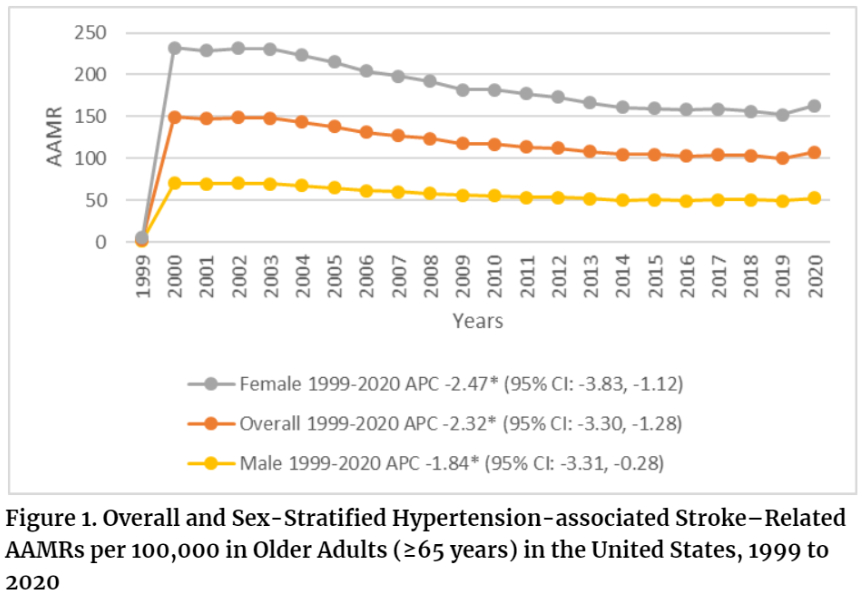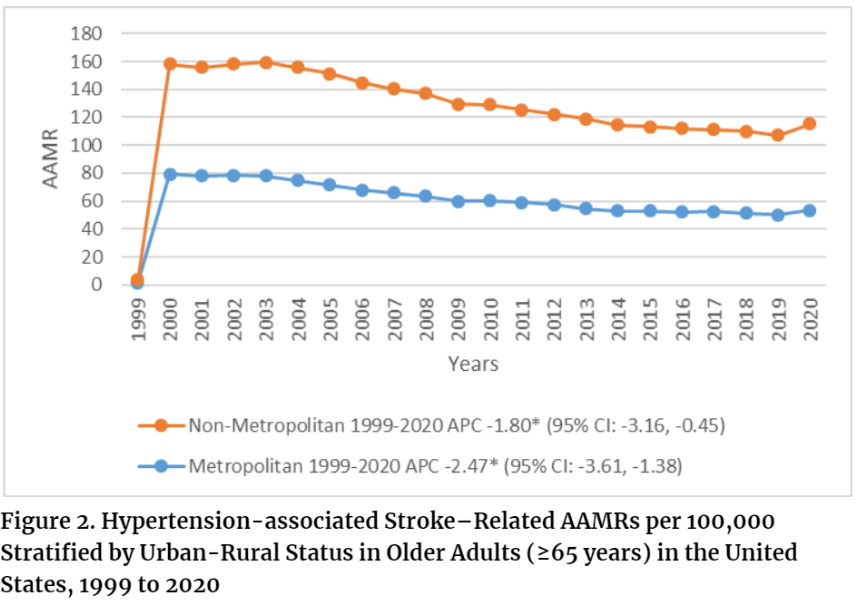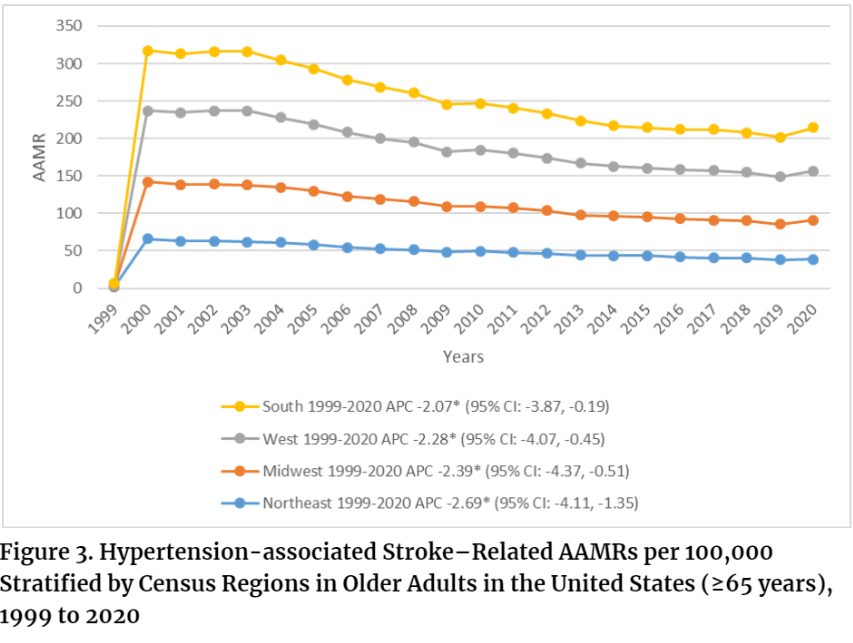Final ID: TP197
Trends In Stroke Mortality due to Hypertension Among Older Adults In The United States From 1999-2020
OBJECTIVES: This study aims to evaluate HTN-associated stroke mortality trends in adults aged ≥65 years, with a focus on demographic and geographic variations, using comprehensive nationwide death certificate data.
METHODS: We analyzed death certificate data from the CDC WONDER database spanning 1999 to 2020 to assess HTN-related stroke mortality. Stroke cases were identified as the underlying cause of death (UCD) using specific ICD-10 codes: I60.x, I61.x, I63.x, I64, I69.0, I69.1, I69.3, and I69.4. HTN and its subtypes were identified as a contributing cause of death using ICD-10 codes I10, I11.x, I12.x, I13.x, and I15.x. AAMRs per 100,000 were calculated, and stratified by age, sex, and geographic region. Temporal trends were assessed using the Joinpoint Regression Program to determine annual percentage changes (APCs). Subgroup analysis based on race/ethnicity was excluded due to data suppression by the CDC.
RESULTS: Between 1999 and 2020, notable disparities in hypertension-related stroke mortality emerged. In nationwide analysis, the AAMRs demonstrated considerable fluctuation, beginning at 79.1 in 2000, declining to 51.2 by 2019, and then increasing to 54.8 in 2020. The APC for the entire study period was -2.32, indicating a general gradual decline in mortality rates. Gender-based analysis revealed females experienced a higher mean AAMR (62.9) than males (54.7). Despite higher mean AAMR, females had more pronounced decline in mortality rate than males (APC female: -2.47 vs male: -1.84). Regional disparities were also pronounced, with Western region exhibiting the highest mean AAMR (73.4), followed by Southern (60.9), Midwestern (58.6), and Northeastern (47.7) regions. Additionally, urban-rural differences were evident, as non-metropolitan areas had a higher mean AAMR (66.1) than metropolitan areas (59.1).
CONCLUSION: This study highlights a significant decrease in HTN-related stroke mortality over two decades, yet disparities remain. Females, South region, and rural areas continue to face higher rates, emphasizing the need for targeted healthcare interventions. The COVID-19 pandemic further underscores the importance of strengthening healthcare systems to address these disparities.
More abstracts on this topic:
Xu Qinzi, Rochon Elizabeth, Bocian Kaitlin, Huang Xue, Poropatich Ronald, Gladwin Mark, Tejero Jesus, Rose Jason, Rodriguez Deborah, Hwang Hyon, Turner Bryan, Hunt Thomas, Dent Matthew, Demartino Anthony, Abdelghany Youmna, Chen Xiukai
A Randomized, Double Blinded, Phase 2B Clinical Trial to Compare the Safety and Efficacy of Sodium Chloride and Sodium Acetate Combination Intravenous Fluids in Acute Stroke PatientsWasay Muhammad, Suri Fareed, Saleem Shafaq, Qureshi Adnan
Readers' Comments
We encourage you to enter the discussion by posting your comments and questions below.
Presenters will be notified of your post so that they can respond as appropriate.
This discussion platform is provided to foster engagement, and simulate conversation and knowledge sharing.
You have to be authorized to post a comment. Please, Login or Signup.



